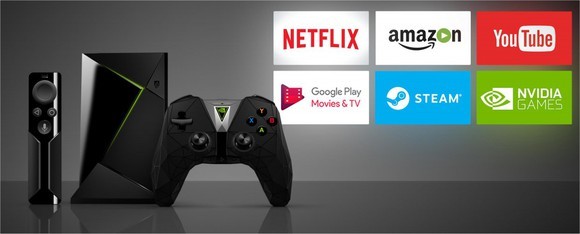NVIDIA (NASDAQ:NVDA) recently unveiled Spot, a $50 golf ball-sized microphone which can be plugged into any electrical socket. The device picks up speech up to 20 feet away and synchronizes with NVIDIA’s Shield TV set-top box to control smart home devices.
The NVIDIA Spot. Image source: NVIDIA.
But instead of building an ecosystem from scratch, NVIDIA has tethered Spot to Alphabet’s (NASDAQ:GOOG) (NASDAQ:GOOGL) Google Assistant and Samsung‘s SmartThings as a “universal remote” for both platforms. The Spot and Shield TV will be compatible with Google AI out of the box, but customers need to purchase an additional dongle to add SmartThings compatibility. The Spot will also only be compatible with the Shield TV, and not other hubs like Google Home.
NVIDIA’s approach is interesting, but can it help the GPU giant gain ground in the highly competitive smart home market? Or will it be overshadowed by more widely recognized products like Google Home and Amazon‘s (NASDAQ:AMZN) Echo devices?
A closer look at Nvidia’s Shield devices
After NVIDIA’s Tegra CPUs failed to gain ground in the smartphone and tablet markets, the chipmaker launched the Shield family of devices (a handheld, gaming tablet, and set-top box) to showcase the Tegra’s capabilities.
Those devices didn’t gain much mainstream momentum, but they appealed to niche users who wanted to play Android games on multiple screens or stream PC games to other devices. More importantly, the Shield gaming tablet got the attention of Nintendo, which had NVIDIA supply custom Tegra processors for its new Switch consoles.

NVIDIA’s Shield TV. Image source: NVIDIA.
It could be about connecting cars to homes
Despite that progress, the Tegra’s core market remains the automotive one, where it powers infotainment and navigation systems in high-end cars. That’s why NVIDIA’s automotive revenue rose 61% annually last quarter and accounted for 6% of its top line.
But the ties between smart homes and connected cars are already appearing. Amazon, for example, is working with Ford to have its cars “talk” to its smart homes via Echo and vice versa. Ford’s Sync connect system enables car owners to remotely start their cars from inside the house, turn off lights from inside the car, and check the status of their computer-monitored components via Alexa.
Therefore, NVIDIA’s move into the smart home market could be an attempt to establish similar connections between its Tegra-powered vehicles, Spot, and Shield TV devices. It certainly could leverage its strength in the automotive market to do so, but Amazon, Google, Samsung, and others might have a better starting position from inside the house.
The upcoming smart home battle
Each of these smart home players has unique advantages. Amazon’s robust sales of cheap Echo devices, its prisoner-taking Prime ecosystem, and the gradual introduction of Dash buttons and DRS-enabled appliances make it a natural fit for linking homes to the internet. Amazon’s Echo Dot costs the same as NVIDIA’s Spot, but doesn’t require an additional set-top box like the Shield TV — which starts at $200.
Google Home, which costs $130, is more expensive than the Spot but doesn’t require an additional set-top box. That could make it the ideal choice for customers who are heavily dependent on Google’s massive ecosystem of services. Meanwhile, Samsung’s SmartThings customers might already own the SmartThings hub, which lets them control their smart appliances via a mobile app — which makes the Spot and Shield TV combination seem redundant.
Investors also shouldn’t forget about Apple (NASDAQ:AAPL), which has already tethered plenty of home automation devices to its HomeKit platform. Apple is also reportedly planning to launch a Siri-powered smart speaker to compete against Home and Echo. Looking further ahead, Facebook will launch its home automation platform Jarvis, which could extend the social network’s reach into your connected appliances. Therefore, NVIDIA’s Spot could easily be left behind as these tech titans battle it out for control of the smart home market.
But let’s not get ahead of ourselves…
Research firm Markets and Markets estimates that the smart home market could grow from $47 billion in 2015 to $122 billion by 2022. But investors should take that bullish forecast with a grain of salt, since security issues, privacy concerns, and the challenge of changing everyday routines could easily throttle the market’s growth.
Therefore, NVIDIA’s expansion into the smart home market deserves attention, but it won’t likely become a pillar of growth anytime soon. Instead, investors should focus on its growth in gaming GPUs, data center GPUs (for machine learning), and automotive CPUs instead.
Suzanne Frey, an executive at Alphabet, is a member of The Motley Fool’s board of directors. Leo Sun owns shares of Amazon.com and Ford. The Motley Fool owns shares of and recommends Alphabet (A shares), Alphabet (C shares), Amazon.com, Apple, Facebook, Ford, and Nvidia. The Motley Fool has the following options: long January 2018 $90 calls on Apple and short January 2018 $95 calls on Apple. The Motley Fool has a disclosure policy.